-
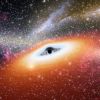 +16 +3
+16 +3Astronomers spot a rogue supermassive black hole hurtling through space leaving star formation in its wake
Supermassive black holes (SMBHs) lurk in the center of large galaxies like ours. From their commanding position in the galaxy's heart, they feed on gas, dust, stars, and anything else that strays too close, growing more massive as time passes. But in rare circumstances, an SMBH can be forced out of its position and hurtle through space as a rogue SMBH.
-
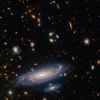 +16 +3
+16 +3This James Webb Space Telescope image shows spiral galaxy in stunning detail
A newly released image from NASA's James Webb Space Telescope shows a crowded field of galaxies and stars, with a distant spiral galaxy standing out in stunning detail. The large galaxy that sits at the bottom of the image, LEDA 2046648, is so clear in the James Webb Space Telescope (JWST or Webb) image that its individual spiral arms are visible.
-
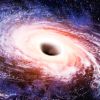 +23 +3
+23 +3Could There Be a Black Hole Lurking on the Edge of the Solar System?
Black holes have captured our imaginations for years: the idea of a near-invisible giant vacuum cleaner drifting through space, ready to devour the Earth in one gulp, is enough to keep anyone awake at night. But now, despite their mystical past, we understand more about black holes and how they work than we ever have.
-
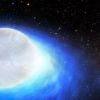 +15 +2
+15 +2Astronomers identify 1st twin stars doomed to collide in kilonova explosion
Although massive stars usually die with spectacular explosions, a handful fizzle out like dud firecrackers. Astronomers have identified the remnants of one such dud firecracker in SGR 0755-2933, a neutron star about 11,400 light-years from Earth in the southern constellation of Puppis. In new research, scientists say that earlier in its lifetime, this star transferred abnormally high amounts of mass to its binary companion — so much so that it was not left with enough material for an explosive death.
-
 +3 +1
+3 +1Physicist encourages continuing the search for life in Venus' atmosphere
In a recent paper accepted to Contemporary Physics, a physicist from Imperial College London uses past missions and recent findings to encourage the importance of searching for life in the atmosphere of the solar system’s most inhospitable planet, Venus.
-
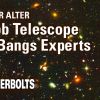 +13 +1
+13 +1Walter Alter: Webb Telescope Big Bangs Experts
Since July 2022, the James Webb Space Telescope has delivered stunning news: it's seeing galaxies orders of magnitude brighter in the early universe then what science anticipated.
-
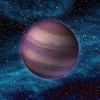 +2 +1
+2 +1Binary Dwarf Stars Found Orbiting Each Other Every 20 Hours. They Were Once Almost Touching
A team of astrophysicists has discovered a binary pair of ultra-cool dwarfs so close together that they look like a single star. They’re remarkable because they only take 20.5 hours to orbit each other, meaning their year is less than one Earth Day. They’re also much older than similar systems.
-
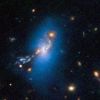 +16 +1
+16 +1Hubble Space Telescope spots ghostly light from ancient wayward stars
Stars are typically very "social" things. Thanks to gravity, they're often found bound together in full-blown galaxies like our own Milky Way or much smaller star clusters.
-
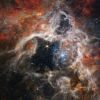 +20 +3
+20 +3‘I’m just blown away’: The Webb Telescope is just getting started
So far it’s been eye candy from heaven: The black vastness of space teeming with enigmatic, unfathomably distant blobs of light. Ghostly portraits of Neptune, Jupiter and other neighbours we thought we knew. Nebulas and galaxies made visible by the penetrating infrared eyes of the James Webb Space Telescope.
-
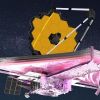 +19 +3
+19 +3James Webb Space Telescope's 1st year in space has blown astronomers away
Just one year after launch, the James Webb Space Telescope is exceeding all expectations, and astronomers are thrilled. Launched on Dec. 25, 2021, the $10 billion infrared observatory was designed to learn how galaxies form and grow, to peer far back into the universe to the era of the first galaxies, to watch stars be born inside their nebulous embryos in unprecedented detail, and to probe the atmospheres of exoplanets and characterize some of the closest rocky worlds.
-
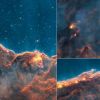 +19 +1
+19 +1A ‘buried treasure’ was hidden in this spectacular image by James Webb
One of James Webb’s first sublime images showed the Carina Nebula. Astronomers have dived into the depths of its cosmic cliffs and made a great discovery. Something amazing was hidden in one of James Webb’s first spectacular images. A “treasure” was “buried” in the Carina Nebula, located 8,500 light years from us, immortalized by the JWST space observatory. NASA announced on December 15, 2022. _ _ form.
-
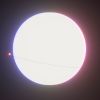 +21 +1
+21 +1Star may have drawn scorching 'hell planet' into super-close orbit
You thought Venus was hot? While the planet does have an average surface temperature of nearly 900 degrees Fahrenheit (500 degrees Celsius), there's an exoplanet just 40 light-years away from Earth that has a surface temperature a scorching three times hotter: 3,600 degrees Fahrenheit (2,000 degrees Celsius). Now, new data has led scientists to develop a theory of how this "hell planet" came to be.
-
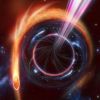 +27 +2
+27 +2We saw a black hole rip apart a star 8.5 billion light-years away
A black hole engulfing a star has been identified as 8.5 billion light-years from Earth. This is the most distant detection of this type of cataclysmic event. Stars that roam too close to black holes are very reckless. They usually end up torn apart by the extreme gravity of black holes, which readily gobble up this material. We have just detected the most distant of these events, announces the European Southern Observatory (ESO) on November 30, 2022. The detection is detailed in the journal Nature.
-
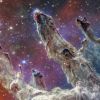 +3 +1
+3 +1NASA Webb Telescope Unveils Soul-Haunting New 'Pillars of Creation' View
Few things encapsulate the wonders of space like the epic Pillars of Creation, a set of gorgeous finger-like tendrils of gas and dust where stars are formed. On Wednesday, NASA and the European Space Agency revealed another fresh look at the pillars from the sharp eyes of the James Webb Space Telescope.
-
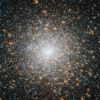 +19 +3
+19 +3Andromeda Contains the Remnants of a Recent "Feeding Event"
There’s a growing body of evidence that galaxies grow large by merging with other galaxies. Telescopes like the Hubble have captured dozens of interacting galaxies, including well-known ones like Arp 248. The Andromeda galaxy is the nearest large galaxy to the Milky Way, and a new study shows that our neighbour has consumed other galaxies in two distinct epochs.
-
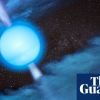 +17 +3
+17 +3‘Overweight’ neutron star defies a black hole theory, say astronomers
An “overweight” neutron star has been observed by astronomers, who say the mysterious object confounds astronomical theories. The hypermassive star was produced by the merger of two smaller neutron stars. Normally such collisions result in neutron stars so massive that they collapse into a black hole almost instantaneously under their own gravity. But the latest observations revealed the monster star hovering in view for more than a day before it faded out of sight.
-
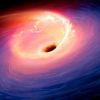 +23 +6
+23 +6Black hole announces itself to astronomers by violently ripping apart a star
A hitherto undiscovered black hole announced its presence to astronomers when it ripped apart and devoured a star that wandered too close to it. The intermediate-mass black hole located in a dwarf galaxy a million light-years from Earth shredded the star in an occurrence that astronomers call a Tidal Disruption Event (TDE). The TDE made itself visible when it blasted out a flare of radiation so powerful that it briefly outshone every star in its dwarf galaxy home combined.
-
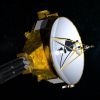 +17 +2
+17 +2NASA’s New Horizons mission begins again at the edge of the solar system
On New Year’s Day three years ago, a small spacecraft zoomed by a chunk of ice billions of miles away, and scientists on Earth cheered. That was the second time the New Horizons probe got up close and personal with an object in the far-away Kuiper Belt—after capturing images of Pluto, its first target, in unprecedented detail.
-
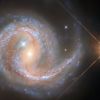 +29 +4
+29 +4Milky Way stars photobomb picturesque spiral galaxy in stunning Hubble photo
This galaxy is located 300 million light-years away, but the star to the right is much closer to Earth.
-
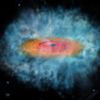 +17 +3
+17 +3Did Supermassive Black Holes Collapse Directly out of Giant Clouds of gas? It Could Depend on Magnetic Fields
Roughly half a century ago, astronomers realized that the powerful radio source coming from the center of our galaxy (Sagitarrius A*) was a “monster” black hole. Since then, they have found that supermassive black holes (SMBHs) reside at the center of most massive galaxies. This leads to what is known as Active Galactic Nuclei (AGN) or quasars, where the central region of a galaxy is so energetic that it outshines all of the stars in its galactic disk. In all that time, astronomers have puzzled over how these behemoths (which play a crucial role in galactic evolution) originated.
Submit a link
Start a discussion




















